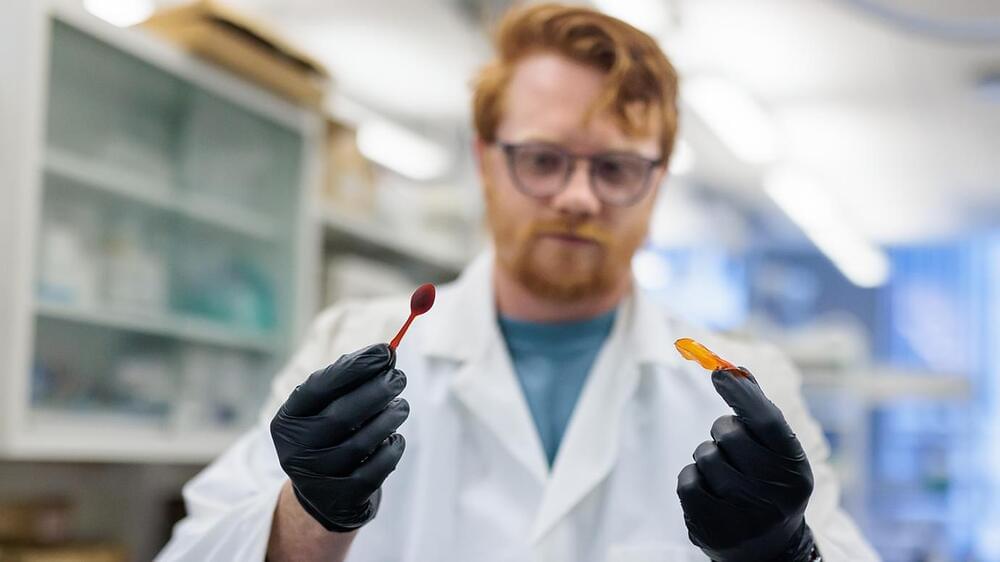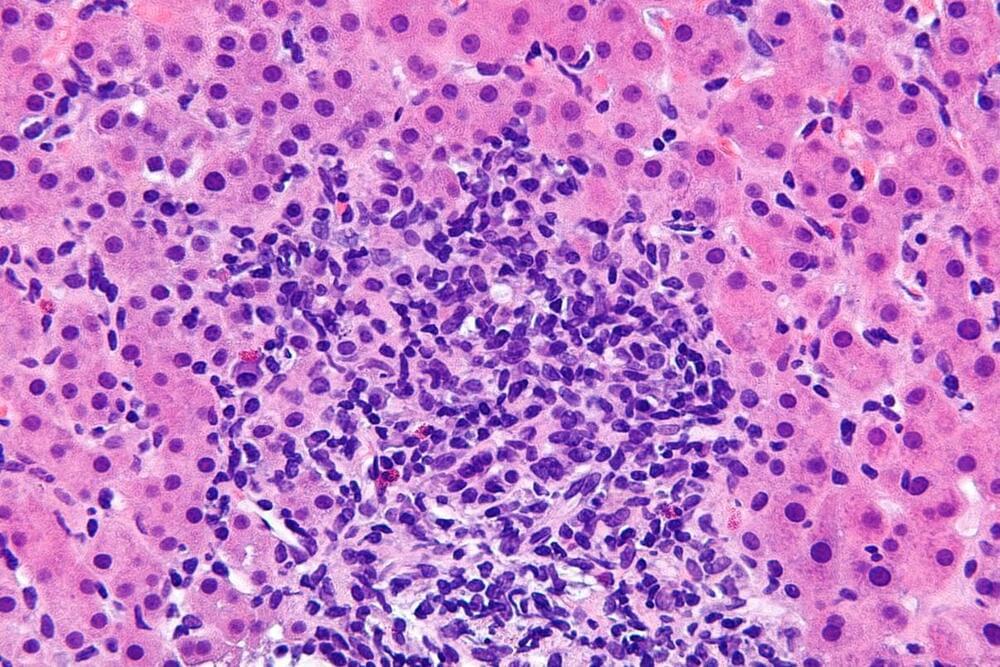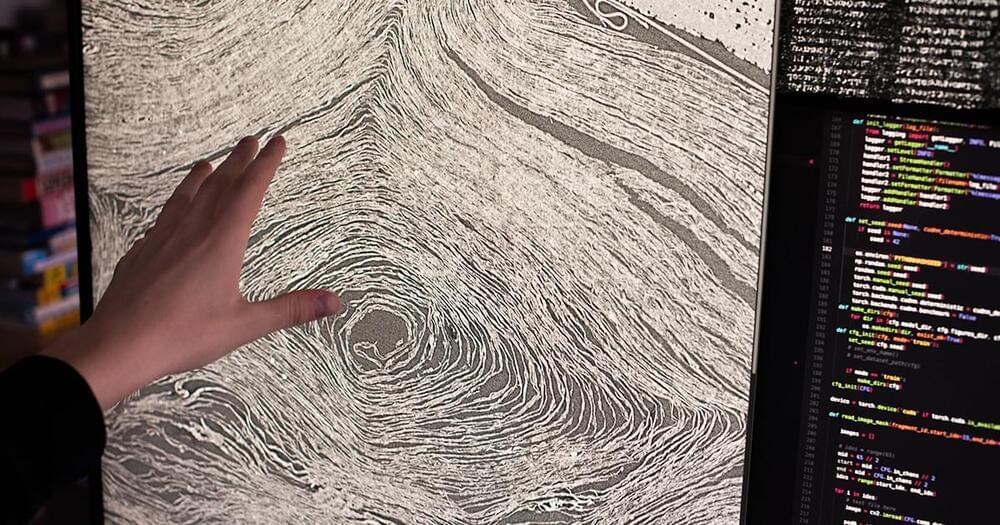Publication in Nature Medicine details long-lasting, disease-modifying intervention in vision loss from diabetic macular edema.
Women are more likely than men to have conditions such as lupus, rheumatoid arthritis, and autoimmune hepatitis (depicted above in a cellular micrograph), in which their immune response attacks healthy, functioning parts of their body. Yet the reason behind this sex-based imbalance has long eluded scientists. Now, a study published last week in proposes that a molecule associated with the X chromosome may be partly to blame. Researchers noticed that many of the proteins commonly targeted by the immune system in people with autoimmune diseases had something in common: They help a molecule called Xist carry out its function. Xist molecules act a bit like quality control inspectors for women’s extra X chromosomes, preventing them from producing a toxic amount of proteins. The scientists suspect that when immune cells encounter large bunches of these Xist-related proteins—for instance, when a dead cell spills them into the bloodstream—they may react by making antibodies to attack them throughout the body. To test the idea, the team studied genetically engineered mice in which both males and females produced Xist. Like their female counterparts, these males were also at an increased risk of developing severe cases of lupus. The researchers also found that people with autoimmune disorders had more antibodies for Xist-related proteins in their blood. Still, Xist molecules may not be the only factor at play: Experts note that some people produce these Xist-related antibodies without developing autoimmune disorders, reports.
A new study adds to the growing literature showing that motor neurons are not the only sites affected in amyotrophic lateral sclerosis, writes Dr. Leana Doherty.
Amyotrophic lateral sclerosis (ALS) is a progressive neurodegenerative disease primarily affecting motor neurons. However, nonmotor manifestations, including sensory, cognitive, and autonomic impairments, increasingly have been reported. In the current study, investigators examined cutaneous innervation and its correlation with disease severity in patients with ALS using the Small Fiber Neuropathy Symptoms Inventory Questionnaire, nerve conduction studies, and distal leg, thigh, and fingertip (glabrous skin) punch biopsies. Patients with alternate diagnoses including endocrinopathies, autoimmune disorders, and vitamin deficiencies were excluded.
Among 149 participants with ALS (mean age, 63; median disease duration, 14.3 months), 35% experienced large-fiber or small-fiber sensory symptoms or both. The frequency of small-fiber symptoms was higher in patients with more severe disease based on King’s staging; scores increase on the scale from 1 to 5 with increasing regions involved. Nearly one quarter of patients had one or more sensory nerve action potential abnormalities. The density of Meissner corpuscles (MC) was reduced in most ALS patients (53÷100), and intraepidermal nerve fiber (IENF) density was reduced at all sites (5th percentile: at the leg, 58%; thigh, 78%) compared with healthy controls. While MC density decreased with increasing King’s stage, IENF density increased. Increasing IENF density on repeat thigh biopsies at 6 and 12 months was associated with shorter survival. The researchers postulated that this may reflect an upregulation of reparative pathways paralleling disease aggressiveness.
Almost 2,000 years ago, a volcano preserved Herculaneum’s vast library of scrolls in unreadable char. A volunteer army of nerds has been racing to decipher them.
The tunnel was discovered 13 meters below the ground by Katharine Martinez, an archaeologist from the Dominican Republic.
In a significant leap forward for quantum nanophotonics, a team of European and Israeli physicists has introduced a new type of polaritonic cavities and redefined the limits of light confinement. This pioneering work, detailed in a study published in Nature Materials, demonstrates an unconventional method to confine photons, overcoming the traditional limitations in nanophotonics.
Physicists have long been seeking ways to force photons into increasingly small volumes. The natural length scale of the photon is the wavelength and when a photon is forced into a cavity much smaller than the wavelength, it effectively becomes more “concentrated.” This concentration enhances interactions with electrons, amplifying quantum processes within the cavity.
However, despite significant success in confining light into deep subwavelength volumes, the effect of dissipation (optical absorption) remains a major obstacle. Photons in nanocavities are absorbed very quickly, much faster than the wavelength, and this dissipation limits the applicability of nanocavities to some of the most exciting quantum applications.
The MMU was the highlight of the STS-41B mission as demonstrated by the stunning mission photographs that graced the cover of Aviation Week & Space Technology, not once, not twice, but three times.
“Hoot” Gibson, the flight’s pilot, shot the photograph featured on the February 20, 1984, issue of the magazine from the crew cabin. Gibson remembered he was the only one on the crew that “had absolutely nothing to do” as McCandless made his way out into space, so he picked up a Hasselblad camera and began documenting the events. When he first looked through the camera’s viewfinder, he could not believe what an incredible sight it was to see McCandless untethered, floating above the Earth. Gibson wanted to capture what he was seeing and remembered how meticulous he was. For each photograph he took three light meter readings and checked the focus four times. In the crew’s photography training he learned that an off-kilter horizon looked wrong and was not pleasing to the eye. That presented a slight problem because Challenger was at a 28.5-degree inclination, so he “tilted the camera to put the horizon level in the pictures.”








